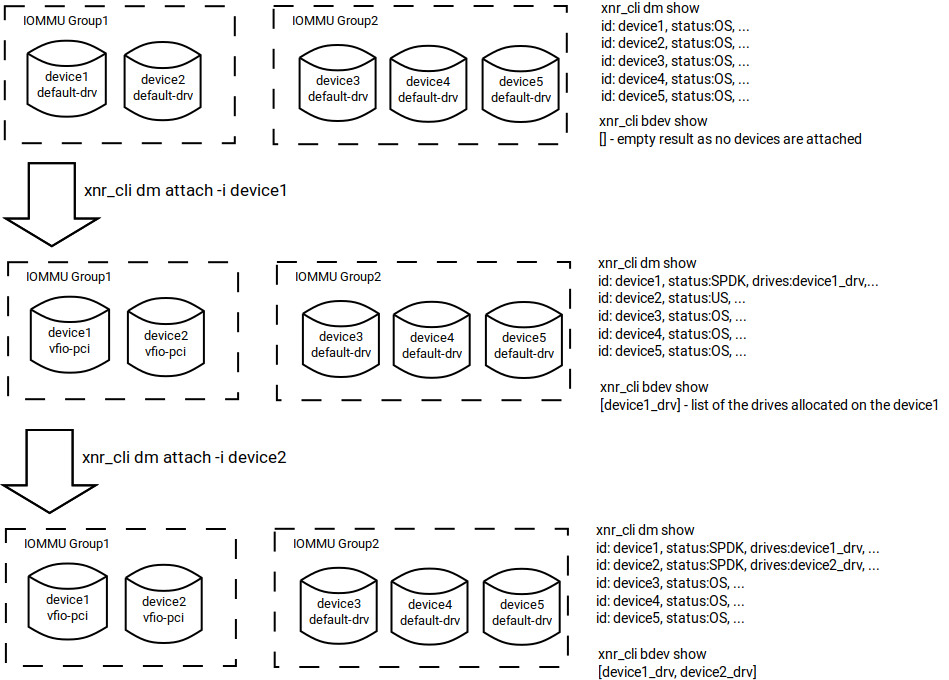Important Notice on Device Driver Management
The xiRAID Opus user space device driver works on the top of one of the following standard OS drivers: uio_pci_generic and vfio-pci. OS usually uses other driver by default. This is the reason to change the device driver during attachment.

Here, after attach command is executed for device1 the driver is updated for both device1 and device2 as they are in the same IOMMU group. However, only the drive(s) allocated on device1 can be accessed by xiRAID Opus. Device1 has SPDK status, while the status of the device2 is US. As soon as the attach is executed for device2, drive(s) allocated on the device2 also become available for the xiRAID Opus. Device2 driver is not updated again as it was already updated on previous attach step.

The allocation of devices along IOMMU groups, the number of groups and groups sizes are hardware dependent and can’t be managed by the DM.

